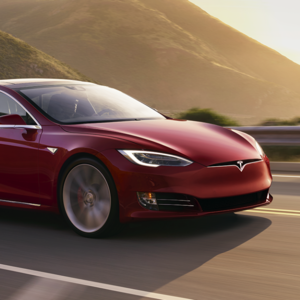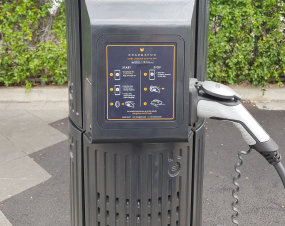Elon Musk has been dropping hints about the 2020 Roadster since 2017, constantly baiting us with stats that would blow today’s electric vehicles out of the water. We sift through the tweets and the hearsay to see exactly what’s being promised and how it compares to the best combustion has to offer.

Design
Elon revealed the 2020 Roadster at the Tesla Semi event in 2017. The prototype shown is going to need some updates (starting with some wing mirrors), but the design is a clear step forward from the original Roadster.
Doors open with a swipe of a finger, resulting in the sleekest possible profile. The spacious front seats are complemented by a cramped second set in the back for a total of four. Musk didn’t show the boot space on offer, but promised “tonnes of storage”. It seems that liveability is a key factor even at the performance end of Tesla’s range.

EV credentials
Of particular interest to the EV industry as a whole, however, is the enormous 200 kWh battery promised for the Roadster. This is double the 100 kWh packed into the Model S and easily more than any other EV on the market today. The only automaker projected to come close is Rivian, whose R1T & R1S models are being designed for a 180 kWh battery pack. Their first electric pickups & SUVs are expected to land around the same time as the Roadster in late 2020.
All that battery is projected to deliver over 1000 kilometres of range according to both Musk and the Tesla site. This would be another record breaker. Where most EVs struggle to achieve liveable range figures, the Roadster easily beats combustion equivalents.
The Roadster’s motor is no slouch, either. Musk has pledged 10,000 Nm of torque output. That’s over 10x the 931 Nm of the latest Model S. If we accept that this is possible, we start to see how the Roadster’s unprecedented performance numbers might be reached.
Performance
Between the reveal event and a series of tweets, Musk has made multiple claims that exceed current performance world records. He stated that the Roadster will boast a 1.9 second 0-60 mph (96 km/h), a staggering 0.3s faster than the current production record-holder, the Porsche 918 Spyder, and the first production car to cross the 2 second barrier. Tesla’s Australian site lists its 0-100 km/h time at 2.1 seconds.
*It’s worth noting that the Spyder isn’t actually available for sale in 2019, so the fastest accelerating car you can buy today is actually the Tesla Model S P100D with Ludicrous+.
Musk neglected to give a specific figure for the Roadster’s top speed, noting only that it would exceed 250 mph (402 km/h). This is firmly hypercar territory. Cars with this kind of pace almost always cost upwards of $1 million USD.
Price
…Which is where Tesla’s real advantage becomes apparent. The Roadster was never going to be affordable but it’s record-smashing stats seem like a bargain when compared to the alternatives.

Consider the Chiron, Bugatti’s flagship hypercar. Its top speed caps out at 420 km/h, slightly above the estimates for the Roadster, but it requires a sluggish 2.5 seconds to reach 100 km/h. It also sells for almost $3 million USD.
Or perhaps the Lamborghini Huracán Performanté? It wás pricéd a little closer to the Roadster on release at $274,390 USD MSRP. Unfortunately its stats don’t quite stack up with a 325 km/h top speed and a 2.9 second 0-100.
It really doesn’t matter what combustion car you compare it to, the Roadster is set to demolish every competitor based on Tesla’s claims. If it succeeds it will be the automotive milestone of this generation, the final nail in the combustion coffin.
And that’s before we consider the insane “SpaceX package” Elon has hinted at on Twitter…



